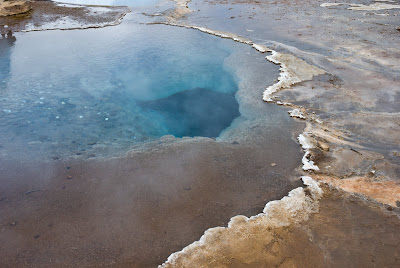
Where does intention come from? Why do we know that some things have intentions while others do not?
In an earlier post, I noted that the earliest forms of life were unintentional by-products of chemical interactions under certain environmental conditions. When some elements (such as oxygen, hydrogen, carbon, nitrogen, etc.) come into contact with other elements, they will bind and form complex molecules and chemical compounds. No matter the urgency with which these elements are drawn to one another, they bind as a strictly unintentional by-product of their inherent properties.
I also noted the obvious, that those things that do not persist through time cease to exist. Turn this around, and we can say that those things that exist have the capacity to persist through time.
A living creature is the result of a series of reactions and interactions between groups of chemical compounds and the environment in which they find themselves. Through processes that are under active investigation and research and about which scientific understanding is growing daily, certain types of chemical compounds – amino acids, proteins, RNA, DNA, and other genetic materials developed the capacity to record the sequence of organic chemical reactions that result in a given life form.
We can therefore think of DNA and other genetic materials as a kind of technology for recording a pattern of reactions between chemical elements that result in a life form. This is why DNA is often referred to as the “blueprint of life”.
DNA allows life forms to reproduce – in effect, to make copies of themselves. But because copies are not always perfect, the development of DNA unleashed the grand experiment we call evolution. Over millions of years, an inestimable number of imperfect copies, mutations, and variations of RNA and DNA were produced, and for the most part vanished just as quickly as they arose.
But some of these genetic variations gave the creatures that carried them a greater ability to persist through time. Some of this genetic material recorded patterns that even in simple life forms we can begin to describe as “behaviours”. Some behaviours helped the creatures that displayed them to survive and reproduce. Other behaviours led to extinction.
Over a myriad of generations, our genetic material and our DNA “learned” what organic composition and what behaviours will allow a species of living creature to survive and to persist through time.
Genetic learning results in intention. Understand that this intentionality is hard-wired into the instincts of every living creature. Behaviours that help an individual and its species to flourish become the instinctual intentions of that species. Every creature from the simplest virus on up unconsciously or consciously intends to behave in such a way as to enable its species to survive, to persist through time, and to flourish.
We consider a behaviour to be intelligent insofar as it accomplishes its intentions and enables the creature exhibiting this behaviour to flourish.
Which brings us to a consideration of the concept of “Intelligent Design”. According to this theory, the universe and the creatures within it show signs of having been designed by an intelligent force, which is usually interpreted as an omniscient God. Various authors, among them Wayne Dyer, author of “The Power of Intention”, argue that God’s intention is immanent in every living creature.
If we understand the origin of intentionality as the intention to survive, to persist through time, and to flourish as an individual and as a species, then yes, we can say that there is intelligence and intention immanent in every living creature. But from this there is no logical necessity to impute the existence of a superior being, still less a personal God. The intelligence and intention inherent in the universe is a logically necessary result of the march of time.
This is the “logos” of which Heraclitus wrote as the fundamental organizing principle, the logic of the universe. This is that same Logos we read of in the bible: “In the beginning was the logos [usually translated from the Greek λóγος as “the word”], and the logos was with God and the logos was God.”
One of my goals for this blog is to map basic religious concepts to natural phenomena, to show that religious symbology is more than just fanciful mythology, but that is a pointer to and a metaphor for characteristics of the real world.
In the language of religion, the logos is the Holy Spirit. It is the immanence of God in nature. And Christ is “the logos made flesh”.